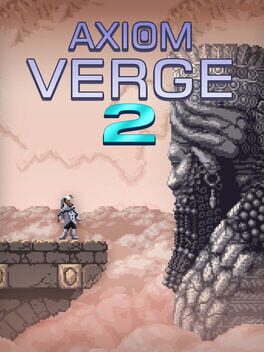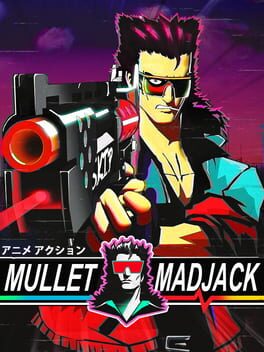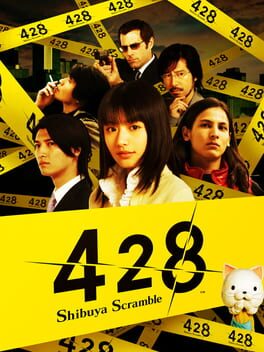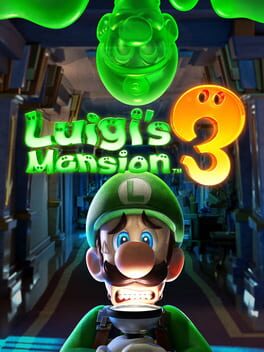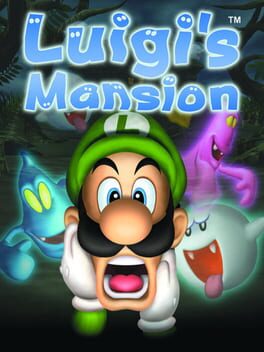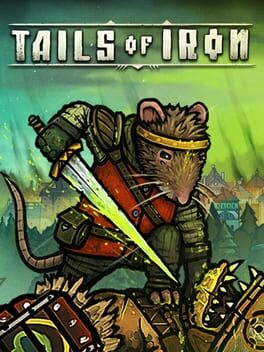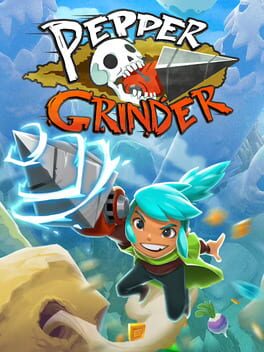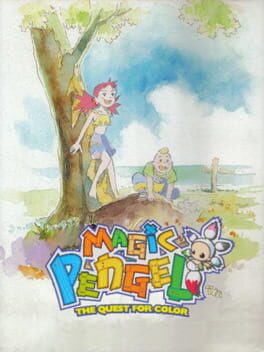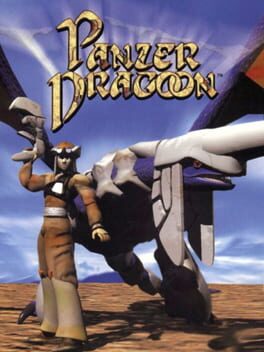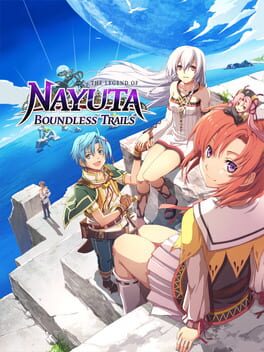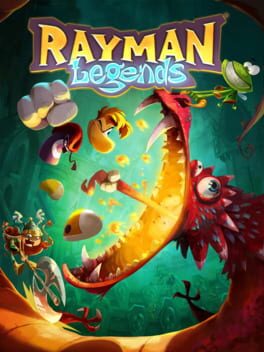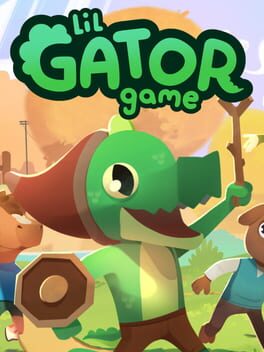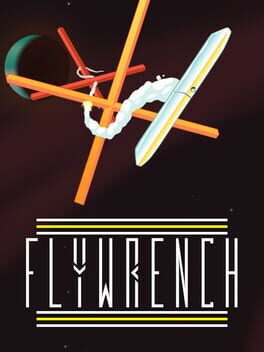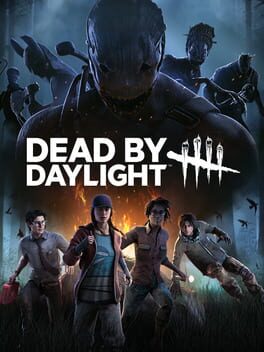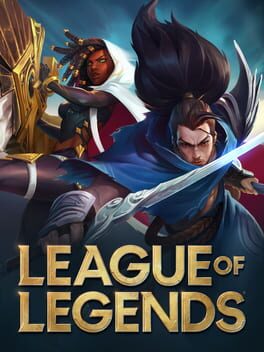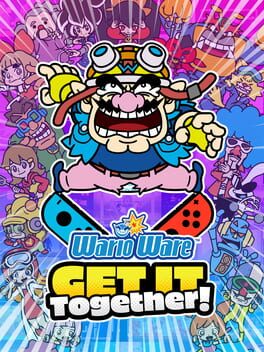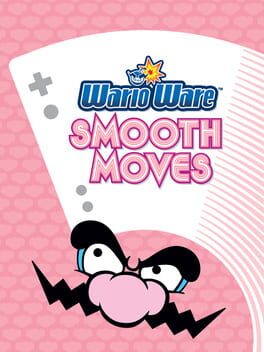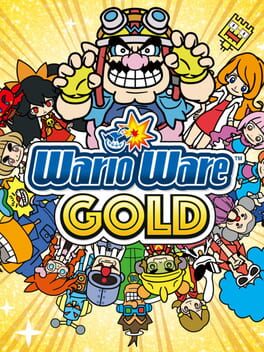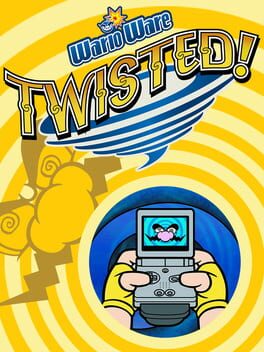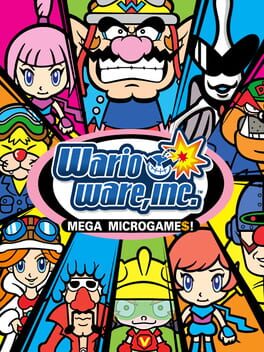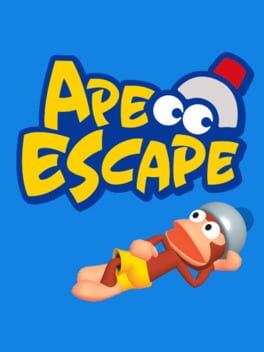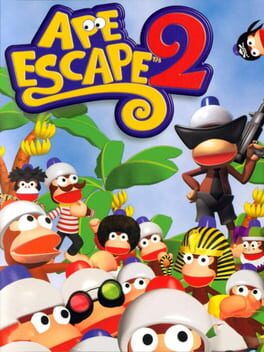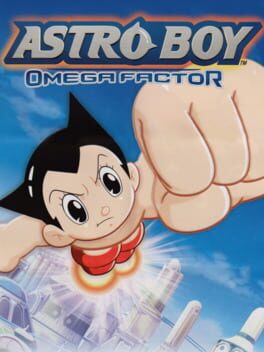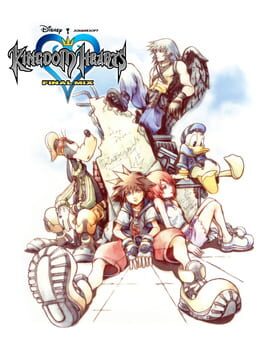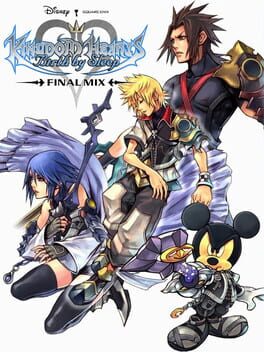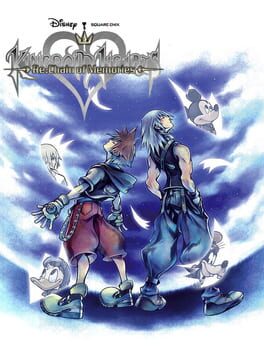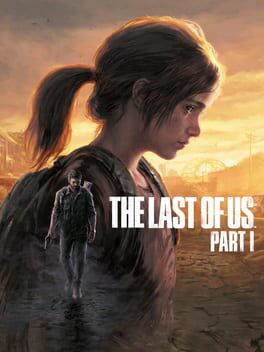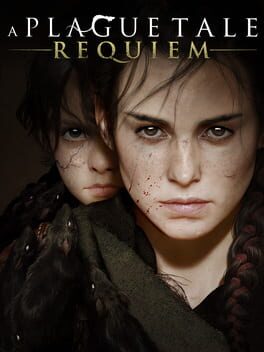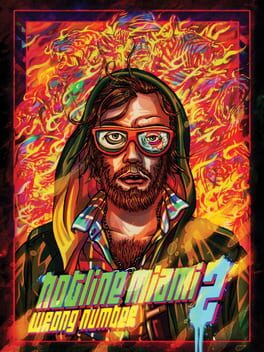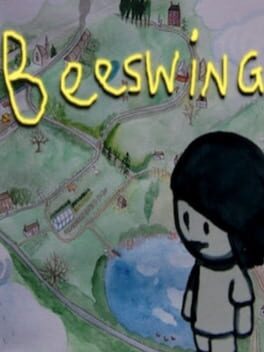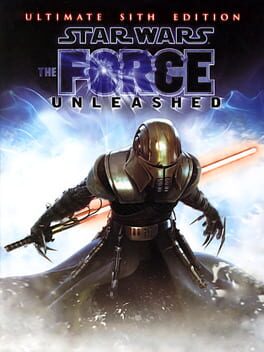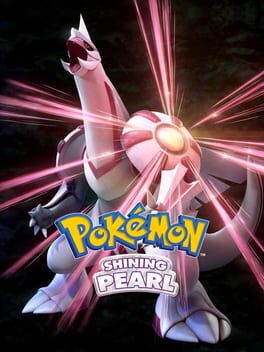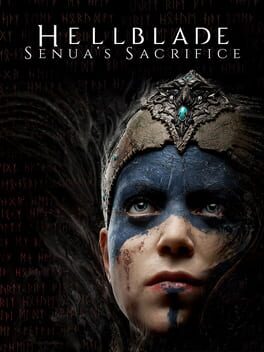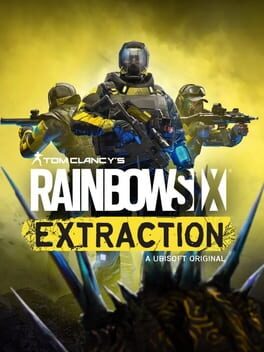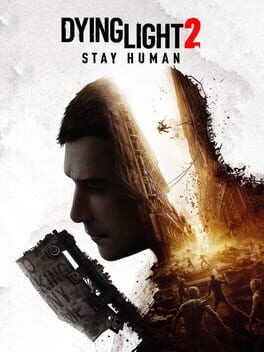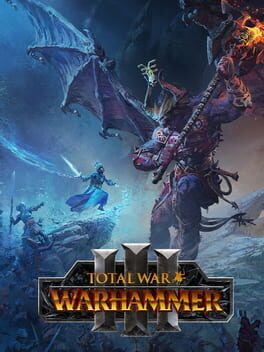LazyBob
458 reviews liked by LazyBob
Outer Wilds
2019
A feat of gaming.
They programmed an entire solar system emulated by a pure physics engine? The worlds are unironically spheres? This is awesome.
They told you to go anywhere and somehow perfectly designed the worlds to keep you progressing at a constant pace?
The replaced traditional traversal 'upgrades' and 'keys' with learning and knowledge? How.
Mario will never do this. Mario would hate for you to learn. Mario spits on you when synapses fire.
This makes the game effectively playable only once in your entire lifetime, and that's a good thing.
This game has some set pieces and moments that are pretty astonishing.
I was hoping to take a little bit more from the story, but that's ok. I think this is a result when nearly every review says "This game changed my perspective on life! I literally never smiled until I played this game" Expectations can only be so high. I almost took a half star away for this reason.
But then I realized - name another game on this level as of 2024. There just isn't one that I'm aware of.
Breaking against the traditional game design norms can sometimes yield the most satisfying results.
They programmed an entire solar system emulated by a pure physics engine? The worlds are unironically spheres? This is awesome.
They told you to go anywhere and somehow perfectly designed the worlds to keep you progressing at a constant pace?
The replaced traditional traversal 'upgrades' and 'keys' with learning and knowledge? How.
Mario will never do this. Mario would hate for you to learn. Mario spits on you when synapses fire.
This makes the game effectively playable only once in your entire lifetime, and that's a good thing.
This game has some set pieces and moments that are pretty astonishing.
I was hoping to take a little bit more from the story, but that's ok. I think this is a result when nearly every review says "This game changed my perspective on life! I literally never smiled until I played this game" Expectations can only be so high. I almost took a half star away for this reason.
But then I realized - name another game on this level as of 2024. There just isn't one that I'm aware of.
Breaking against the traditional game design norms can sometimes yield the most satisfying results.
Axiom Verge 2
2021
It's been a few years since I played through the first Axiom Verge, but what stuck with me the most was the creepy yet beautiful "H. R. Giger"-esque art style and an incredible variety of weapons. I also remember being lost by the story, but felt that the gameplay was definitely fun enough to just treat the narrative as a side aspect of the experience.
Aside from also being a metroidvania, Axiom Verge 2 changes up nearly every key element from the original game, for better or for worse. Instead of a biomechanical aesthetic, the visuals follow the typical environments you'd see on most planets (rainy jungle, snowy mountain, etc.), but there's still some cool sci-fi tech popping up. There's also only about a quarter of the number of unique weapons that the original had. The trade-off here is that this game features many more upgrades to your character abilities, primarily to improve movement options with climbing and grappling.
One new aspect in Axiom Verge 2 that I found to be a straight-up improvement is the design of the map(s). This game's world actually has a parallel universe that matches up to the general layout of the main map, but with the individual locations themselves being completely different. It might sound a bit overwhelming, but it makes sense pretty quickly when going between them. Some of my favorite puzzles were all about this mechanic and involved identifying holes in one map, then finding the right spot to traverse from one map to the other.
Like with the original Axiom Verge, this entry can get hard to follow when it comes to the story. This one splits up the narrative between short cutscenes and lore-filled notes scattered around the game. The heavier emphasis on story also brings many more character names and sci-fi terms with it, and I'll admit I was button mashing through the plot for the second half of the game. Luckily, exploring the map and discovering secrets was enough of a motivation for me to keep on playing. I usually find environmental storytelling to be at its most effective in the metroidvania genre, so I hope any future Axiom Verge games use their fantastic worlds more to tell their tales.
Aside from also being a metroidvania, Axiom Verge 2 changes up nearly every key element from the original game, for better or for worse. Instead of a biomechanical aesthetic, the visuals follow the typical environments you'd see on most planets (rainy jungle, snowy mountain, etc.), but there's still some cool sci-fi tech popping up. There's also only about a quarter of the number of unique weapons that the original had. The trade-off here is that this game features many more upgrades to your character abilities, primarily to improve movement options with climbing and grappling.
One new aspect in Axiom Verge 2 that I found to be a straight-up improvement is the design of the map(s). This game's world actually has a parallel universe that matches up to the general layout of the main map, but with the individual locations themselves being completely different. It might sound a bit overwhelming, but it makes sense pretty quickly when going between them. Some of my favorite puzzles were all about this mechanic and involved identifying holes in one map, then finding the right spot to traverse from one map to the other.
Like with the original Axiom Verge, this entry can get hard to follow when it comes to the story. This one splits up the narrative between short cutscenes and lore-filled notes scattered around the game. The heavier emphasis on story also brings many more character names and sci-fi terms with it, and I'll admit I was button mashing through the plot for the second half of the game. Luckily, exploring the map and discovering secrets was enough of a motivation for me to keep on playing. I usually find environmental storytelling to be at its most effective in the metroidvania genre, so I hope any future Axiom Verge games use their fantastic worlds more to tell their tales.
Persona 3 Reload
2024
I've been wanting to replay persona 3 for a while now ever since I beat FES in 2021.
This franchise means a fuckton to me and no review will ever do justice to the life altering lessons I've been taught. Here's me trying to do that anyway.
Back in 2021 I was constantly breaking down and hating who I was, I was never myself always put on a mask and thus never learned anything, then Persona 3 and 4 came in and kinda just made me want to express who I truly was. Man I've come so far now playing through this made me realize the stuff that I picked up on subconsciously back then this game gave me courage to be myself because there's only one life that I have and I better spend it being myself and not some random person I don't even know.
Now let's talk about the game itself, it's a great version of Persona 3 in my opinion, it modernizes a lot while staying true to the original spirit of the game and my god does this game look so fucking good, I'm not one to gush over graphics but this game for some reason looks like the best thing I've ever seen they've really outdone themselves on the style more then Persona 5.
Overall this game gives a fresh new look and feel to Persona 3 and makes it more accessible to more people which I think is a great thing!
I hope atlus will give us Persona 6 next I think they're ready to tackle it now that they've revisited one of the roots of the series.
I recommend this game if you;
Already like Persona
Want to get into Persona
Want a good yet unique RPG
This franchise means a fuckton to me and no review will ever do justice to the life altering lessons I've been taught. Here's me trying to do that anyway.
Back in 2021 I was constantly breaking down and hating who I was, I was never myself always put on a mask and thus never learned anything, then Persona 3 and 4 came in and kinda just made me want to express who I truly was. Man I've come so far now playing through this made me realize the stuff that I picked up on subconsciously back then this game gave me courage to be myself because there's only one life that I have and I better spend it being myself and not some random person I don't even know.
Now let's talk about the game itself, it's a great version of Persona 3 in my opinion, it modernizes a lot while staying true to the original spirit of the game and my god does this game look so fucking good, I'm not one to gush over graphics but this game for some reason looks like the best thing I've ever seen they've really outdone themselves on the style more then Persona 5.
Overall this game gives a fresh new look and feel to Persona 3 and makes it more accessible to more people which I think is a great thing!
I hope atlus will give us Persona 6 next I think they're ready to tackle it now that they've revisited one of the roots of the series.
I recommend this game if you;
Already like Persona
Want to get into Persona
Want a good yet unique RPG
Mullet Madjack
2024
It's just Post Void with clutter, and I hate to say it but it's so blatantly similar but doesn't really improve anything from Post Void (other than adding a sword)
I love the attempt at the aesthetic even if it sometimes falls short, but while Post Void's loop was digital crack, this one never gets close to that. You play it to enjoy the aesthetic but even with that you have to realize the 'campaign' is about an hour long at best.
The other main mode for the game is 'Endless Mode' which really highlights the games issues. Outside of the weapon swaps, the upgrades almost never feel interesting. And then when you get one that is, it's always extremely limited - Once per floor, 10% chance to activate, etc etc. Post Void's upgrades felt extremely powerful at times. Like if you got the right roll as your first upgrade you could tell how well or poorly the run was going to go. And with all the upgrades in this game, which feels very 'more is less', I think it would've been more interesting to go a Vampire Survivors type route and let you feel overpowered, but you never do. Every upgrade is so incredibly miniscule ' 5% run speed' 'you dont get damaged by one particular floor hazard' 'crotch shots or head shots give you more time (which you never ever need )
Also this launched at 20 dollars and Post Void launched at 3 dollars. And while I think both games are worth 20 dollars, I think that puts things in perspective.
I love the attempt at the aesthetic even if it sometimes falls short, but while Post Void's loop was digital crack, this one never gets close to that. You play it to enjoy the aesthetic but even with that you have to realize the 'campaign' is about an hour long at best.
The other main mode for the game is 'Endless Mode' which really highlights the games issues. Outside of the weapon swaps, the upgrades almost never feel interesting. And then when you get one that is, it's always extremely limited - Once per floor, 10% chance to activate, etc etc. Post Void's upgrades felt extremely powerful at times. Like if you got the right roll as your first upgrade you could tell how well or poorly the run was going to go. And with all the upgrades in this game, which feels very 'more is less', I think it would've been more interesting to go a Vampire Survivors type route and let you feel overpowered, but you never do. Every upgrade is so incredibly miniscule ' 5% run speed' 'you dont get damaged by one particular floor hazard' 'crotch shots or head shots give you more time (which you never ever need )
Also this launched at 20 dollars and Post Void launched at 3 dollars. And while I think both games are worth 20 dollars, I think that puts things in perspective.
I’ve been thinking a lot about storytelling in video games lately. Well, storytelling as a whole actually. What exactly makes a fictional world feel compelling to me? How should you best spin a yarn as to make the characters breathe, their struggles resonate, and their victories triumphant? Most importantly, if a writer did have the vision and the wherewithal to execute said vision, then how could they best convince their audience that their vision was worth their time?
This week, I might have come a step closer to realizing those answers by revisiting an old favorite of mine.
428: Shibuya Scramble is not just your ordinary traditional visual novel. It’s a crime thriller, a romantic comedy, and an investigative journalism drama all rolled into one. That description alone could sell the game, but the crazy part is that the narrative is just the icing on top of this deceptively layered and charismatic tale. The game's greatest strength is not just what it has to say, but rather how it says it.
As I've discussed previously, many story-heavy games have difficulty marrying their storytelling and their gameplay, often choosing to stratify their game into separate sections of explicit narrative and explicit gameplay. 428 Shibuya Scramble does not struggle with this whatsoever, for the interaction with the narrative is the gameplay and it presents its story in such a way where every detail matters. You see, 428: Shibuya Scramble operates in hourly time slots with several protagonists at once. The goal is to guide each protagonist on their separate storyline and ensure that every protagonist makes it to the end of each hour by making the correct decisions and avoiding untimely demise through bad ends. However, there’s a catch. Protagonists can reach bad ends on their own paths even if every decision they make within their contained storyline is “correct.” This is because these different storylines intersect one another in various ways, and decisions made with one character will ultimately echo throughout the hour, affecting the other protagonists in unforeseen ways.
As such, the player isn’t doing anything mechanically complex aside from reading text and picking the right options most of the time, which means that like the best detective games, 428 is really about the game outside of the game. The player has to figure out how the butterfly effect ripples across each hour, even as characters often impact one another without ever coming face to face. For example, one of the characters can become incapacitated by consuming a potent energy drink on the job; you can avoid this bad end by making sure an earlier character fails to provide his detective partner with the lethal sample. While the nature of these intersections is often unclear, 428 revels in this uncertainty. It’s not content with simply using its bad ends as punishments; rather, it grasps these bad ends as opportunities to inject additional lore and guide the player towards the truth. These bad ends are often light-hearted and comedic just as they are valuable learning opportunities, and somehow the game walks the tightrope between solemnity and levity without ever losing sincerity. Simply put, most story-heavy games are constantly asking the five Ws, but 428 Shibuya Scramble is one of the rare whimsical games that dares ask “What if?”
On a similar note, a lot of players tend to get frustrated by 428’s habit of barricading individual protagonist paths with “KEEP OUT” banners, but I find this mechanic to be a stroke of genius. In order to clear these barricades, players are forced to traverse other protagonists’ stories in the meanwhile and search for a “JUMP” point linking them back to the original blocked protagonist. By doing so, they’re often hopping around the hour and viewing events from multiple parallel perspectives, gathering more information to better grasp how the timelines intertwine. Moreover, the game fully commits to this idea of rounding out its narrative by even hiding JUMP points behind certain decisions that would otherwise have no bearing upon story events (i.e. “flavor text questions/decisions”) and certain TIPs (blue colored text that when selected, provides additional background). This keeps the player vigilant, as they’re constantly on the prowl for connections while soaking in every detail and considering every possibility to push the plot forward.
Of course, this is not to take away from the game’s multitude of other strengths. For instance, consider the game’s sound design. From hurried footsteps and screeching cars in high-speed chases to distant explosions and sirens spelling imminent doom, Chunsoft knew just how to punctuate every moment with appropriate sound effects. Another obvious selling point is 428’s reliance upon live action stills and full motion video, which aside from standing out from other sketched and animated visual novels, provides the game a sense of immersion and realism that interestingly often contrasts with the game’s over-the-top sense of humor. Finally, the actors do a great job emoting and infusing their lines with personality despite the lack of voice acting. Alongside the phenomenal character design, written in such a way where every character has obvious flaws yet remain every bit relatable, there’s a certain charm to 428 Shibuya Scramble that many of its peers fail to imitate. As a complete and tightly-knit package, its artistic decisions and gameplay mechanics do not simply capture Shibuya; they perpetuate the energy of the city, enthralling and surprising the player at every turn.
I’m often reluctant to revisit beloved titles. More often than not, giving old favorites another spin with a more critical eye or even thinking about them for too long causes them to deteriorate somewhat in my mind, forcing me to confront my prior nostalgia. It’s never a great feeling to question yourself if something you once loved was really all that great to begin with. 428 is the exact opposite of this. Don’t get me wrong; the game does have some rough points. The inability to adjust text speed and skip previously read text can be a huge ask for players with limited time (though if you’re playing on PC, the unofficial text speed patch alleviates this somewhat), and I find myself agreeing with others in that the true ending leaves something to be desired. I won’t deny that I had some apprehensions upon replaying yet another memorable classic.
Yet somehow, this game has lived rent-free in my head for over half a decade. I had intended to replay it for just an hour or two to refresh my palette, as I had already 100%ed it and wanted to move onto newer and grander adventures. In spite of that, I found myself with the exact opposite problem. I simply could not put the game down. 428 Shibuya Scramble is the rare example of a game that to me, never stops getting better. Playing through it again immediately reminded me of why I fell in love with video games to begin with, and it didn’t matter that I had seen the destination already; the thrill of the journey was enough to make me return. I’m sure that I could ponder more areas of improvement and potential fixes, though honestly, I can’t bring myself to care. There aren’t many games that I unabashedly adore and wish for more, but there are even fewer games that manage to spark my Imagination and leave me content with what I have. At the end of the day, 428: Shibuya Scramble is not just a triumph of the medium; it's a triumph of human inevitability, gathering momentum until coincidence and fate become reality. I may have become more cynical over time, but it's moments like these that prove that sometimes, it really does pay to believe.
This week, I might have come a step closer to realizing those answers by revisiting an old favorite of mine.
428: Shibuya Scramble is not just your ordinary traditional visual novel. It’s a crime thriller, a romantic comedy, and an investigative journalism drama all rolled into one. That description alone could sell the game, but the crazy part is that the narrative is just the icing on top of this deceptively layered and charismatic tale. The game's greatest strength is not just what it has to say, but rather how it says it.
As I've discussed previously, many story-heavy games have difficulty marrying their storytelling and their gameplay, often choosing to stratify their game into separate sections of explicit narrative and explicit gameplay. 428 Shibuya Scramble does not struggle with this whatsoever, for the interaction with the narrative is the gameplay and it presents its story in such a way where every detail matters. You see, 428: Shibuya Scramble operates in hourly time slots with several protagonists at once. The goal is to guide each protagonist on their separate storyline and ensure that every protagonist makes it to the end of each hour by making the correct decisions and avoiding untimely demise through bad ends. However, there’s a catch. Protagonists can reach bad ends on their own paths even if every decision they make within their contained storyline is “correct.” This is because these different storylines intersect one another in various ways, and decisions made with one character will ultimately echo throughout the hour, affecting the other protagonists in unforeseen ways.
As such, the player isn’t doing anything mechanically complex aside from reading text and picking the right options most of the time, which means that like the best detective games, 428 is really about the game outside of the game. The player has to figure out how the butterfly effect ripples across each hour, even as characters often impact one another without ever coming face to face. For example, one of the characters can become incapacitated by consuming a potent energy drink on the job; you can avoid this bad end by making sure an earlier character fails to provide his detective partner with the lethal sample. While the nature of these intersections is often unclear, 428 revels in this uncertainty. It’s not content with simply using its bad ends as punishments; rather, it grasps these bad ends as opportunities to inject additional lore and guide the player towards the truth. These bad ends are often light-hearted and comedic just as they are valuable learning opportunities, and somehow the game walks the tightrope between solemnity and levity without ever losing sincerity. Simply put, most story-heavy games are constantly asking the five Ws, but 428 Shibuya Scramble is one of the rare whimsical games that dares ask “What if?”
On a similar note, a lot of players tend to get frustrated by 428’s habit of barricading individual protagonist paths with “KEEP OUT” banners, but I find this mechanic to be a stroke of genius. In order to clear these barricades, players are forced to traverse other protagonists’ stories in the meanwhile and search for a “JUMP” point linking them back to the original blocked protagonist. By doing so, they’re often hopping around the hour and viewing events from multiple parallel perspectives, gathering more information to better grasp how the timelines intertwine. Moreover, the game fully commits to this idea of rounding out its narrative by even hiding JUMP points behind certain decisions that would otherwise have no bearing upon story events (i.e. “flavor text questions/decisions”) and certain TIPs (blue colored text that when selected, provides additional background). This keeps the player vigilant, as they’re constantly on the prowl for connections while soaking in every detail and considering every possibility to push the plot forward.
Of course, this is not to take away from the game’s multitude of other strengths. For instance, consider the game’s sound design. From hurried footsteps and screeching cars in high-speed chases to distant explosions and sirens spelling imminent doom, Chunsoft knew just how to punctuate every moment with appropriate sound effects. Another obvious selling point is 428’s reliance upon live action stills and full motion video, which aside from standing out from other sketched and animated visual novels, provides the game a sense of immersion and realism that interestingly often contrasts with the game’s over-the-top sense of humor. Finally, the actors do a great job emoting and infusing their lines with personality despite the lack of voice acting. Alongside the phenomenal character design, written in such a way where every character has obvious flaws yet remain every bit relatable, there’s a certain charm to 428 Shibuya Scramble that many of its peers fail to imitate. As a complete and tightly-knit package, its artistic decisions and gameplay mechanics do not simply capture Shibuya; they perpetuate the energy of the city, enthralling and surprising the player at every turn.
I’m often reluctant to revisit beloved titles. More often than not, giving old favorites another spin with a more critical eye or even thinking about them for too long causes them to deteriorate somewhat in my mind, forcing me to confront my prior nostalgia. It’s never a great feeling to question yourself if something you once loved was really all that great to begin with. 428 is the exact opposite of this. Don’t get me wrong; the game does have some rough points. The inability to adjust text speed and skip previously read text can be a huge ask for players with limited time (though if you’re playing on PC, the unofficial text speed patch alleviates this somewhat), and I find myself agreeing with others in that the true ending leaves something to be desired. I won’t deny that I had some apprehensions upon replaying yet another memorable classic.
Yet somehow, this game has lived rent-free in my head for over half a decade. I had intended to replay it for just an hour or two to refresh my palette, as I had already 100%ed it and wanted to move onto newer and grander adventures. In spite of that, I found myself with the exact opposite problem. I simply could not put the game down. 428 Shibuya Scramble is the rare example of a game that to me, never stops getting better. Playing through it again immediately reminded me of why I fell in love with video games to begin with, and it didn’t matter that I had seen the destination already; the thrill of the journey was enough to make me return. I’m sure that I could ponder more areas of improvement and potential fixes, though honestly, I can’t bring myself to care. There aren’t many games that I unabashedly adore and wish for more, but there are even fewer games that manage to spark my Imagination and leave me content with what I have. At the end of the day, 428: Shibuya Scramble is not just a triumph of the medium; it's a triumph of human inevitability, gathering momentum until coincidence and fate become reality. I may have become more cynical over time, but it's moments like these that prove that sometimes, it really does pay to believe.
Luigi's Mansion 3
2019
I love this game so much. Luigi's mansion had me hooked from the start, I absolutely love the satisfying gameplay and clever use of mechanics. This game was charming all the way through. While part of me was expecting more traditionally hotel themed floors, every floor was more clever than the last, and all my floor predictions came true but not in the way I was expecting if that makes sense. For example, I was thinking "there definitely has to be a swimming pool floor" and yes there was, accompanied by a whole fitness center to go along with it. While there were a lot of bosses, none of them were boring or bullshitty (gimmicky). They were all fun in their own ways and extremely satisfying to beat. I must say though, I enjoyed Hellen Gravely's fight more than King Boo's, it was challenging and definitely took a few times but it really made you utilize every mechanic in the game. The only complaint I have is Polterkitty was just extremely annoying (though I think that's the point) and gimmicky to fight, the window for stunning him was extremely short and didn't always work? But that's seriously the only complaint I have about this game. It was a super fun experience overall, I can definitely see myself going back to it as a comfort game.
Beneath a Steel Sky
1994
I've always raved about Broken Sword to be one of my favorite point’n’click adventures which to me was the peak of the classic genre, hitting me just at the right time with the right topic to skip school for a couple of days on release. Despite that, I've never actually played any older games by Revolution Software, who started their Virtual Theatre Engine on Lure of the Temptress followed by Beneath a Steel Sky.
You can find a lot of the personnel on Lure of the Temptress already. David Sykes, Tony Warriner, Dave Cummins, Stephen Oades and Charles Cecil, they're all there, but the game, at least in retrospect, is a catastrophe and so it took until the release of the sequel Beyond a Steel Sky to find my motivation again. And even finally starting my 7 hour playthrough of Beneath a Steel Sky in perfect timing for its 30th anniversary in March 2024, it still took me two months to attempt finishing it.
I'm not angry at all at the old games, because GOG gave them away for free and I think they're no charge ScummVM games these days anyway. Revolution probably know very well that they might have a history with these programs, but they didn't age all that well. Beneath a Steel Sky though is still worth looking into, if you're prepared for what to expect.
Beneath a Steel Sky starts with digitized comic cutscenes that of course are a little pixelated given it's 1993/94, so it does make sense to include basically the same panels by Dave Gibbons in print form with the original release. The story is about a wasteland citizen stumbling into an amnesiac urban neo noir family affair that nicks elements from Mad Max, Blade Runner and Star Wars so elegantly it would create false anticipation to use them as an actual description. But you'll understand the references when playing.
Have you played Broken Sword? You'll notice the pace in storytelling is quite similarly fast, whilst some puzzles can drive you insane by having you use items multiple times and having you stop looking for pixels as there rarely is a lot to discover, until you finally are required to use that one little spot that will reveal itself by a mouse over on a minimal hitbox. The fully dubbed version of Beneath a Steel Sky could be so nice, wouldn't it have its quirks that might still have looked like a good idea back in the day. Let's say the music by Dave Cummins isn't on the most pleasant side either.
Beneath a Steel Sky seems clearly to be a child of its time, when tabletop role playing worlds like Cyberpunk and Shadowrun kept the Neuromancer tropes alive in the nineties until we finally got movies like Johnny Mnemonic and The Matrix. Virtual Reality was a big futuristic thing as well, though contemporary peripherals had been cumbersome and ineffective. It was enough hype to have New Line Cinema implement the topic to their new interpretation of an old Stephen King short story with The Lawnmower Man in 1992.
Those very enigmatic cyberspace episodes were rather complicated puzzles to solve for me in Beneath a Steel Sky either, especially when showing the more uncomfortable attributes of the game, which aren't in the controls as much as within the fact you can fail. Having to reload your card into the terminal here is just as much a waste of time as having to restore the game after dying, so prepare yourself for timing issues and constant saving to avoid consequences.
On the other hand Beneath a Steel Sky identifies as a cynically written story though and having a robot sidekick to upload into several shells is adding to the humor just as shady surgeons or factory owners. It's a future dystopia just right up my alley, but at a certain point it was just running around for a couple of hours more or seeking help in a guide. Unless you want that from an otherwise short game in 2024 you'll probably understand we've had some evolvement in clever writing and programming, so the experience can still be challenging but less frustrating in modern graphic adventures.
Given the zero costs that's alright, I guess, especially with Broken Sword on the horizon, which was another improvement for the Studio. Compared to Lure of the Temptress, Beneath a Steel Sky was a gigantic leap forward and that's still something to honor in retrospect. I might sure have thought differently of Beneath a Steel Sky back in the day, quite possibly as a Revolution like they named themselves.
As an adolescent, the alienation within a rather bizarre civilization could be something relatable. I'm not even sure the vision is that far off, maybe not our exact present, but a society based on a computer network with district restrictions and employment for rather pointless activities to keep people occupied is close enough. And there's a certain nostalgia for lower resolution pixel graphics as well, so there's a chance you'll feel at home playing Beneath a Steel Sky today. Have I said it's free?
You can find a lot of the personnel on Lure of the Temptress already. David Sykes, Tony Warriner, Dave Cummins, Stephen Oades and Charles Cecil, they're all there, but the game, at least in retrospect, is a catastrophe and so it took until the release of the sequel Beyond a Steel Sky to find my motivation again. And even finally starting my 7 hour playthrough of Beneath a Steel Sky in perfect timing for its 30th anniversary in March 2024, it still took me two months to attempt finishing it.
I'm not angry at all at the old games, because GOG gave them away for free and I think they're no charge ScummVM games these days anyway. Revolution probably know very well that they might have a history with these programs, but they didn't age all that well. Beneath a Steel Sky though is still worth looking into, if you're prepared for what to expect.
Beneath a Steel Sky starts with digitized comic cutscenes that of course are a little pixelated given it's 1993/94, so it does make sense to include basically the same panels by Dave Gibbons in print form with the original release. The story is about a wasteland citizen stumbling into an amnesiac urban neo noir family affair that nicks elements from Mad Max, Blade Runner and Star Wars so elegantly it would create false anticipation to use them as an actual description. But you'll understand the references when playing.
Have you played Broken Sword? You'll notice the pace in storytelling is quite similarly fast, whilst some puzzles can drive you insane by having you use items multiple times and having you stop looking for pixels as there rarely is a lot to discover, until you finally are required to use that one little spot that will reveal itself by a mouse over on a minimal hitbox. The fully dubbed version of Beneath a Steel Sky could be so nice, wouldn't it have its quirks that might still have looked like a good idea back in the day. Let's say the music by Dave Cummins isn't on the most pleasant side either.
Beneath a Steel Sky seems clearly to be a child of its time, when tabletop role playing worlds like Cyberpunk and Shadowrun kept the Neuromancer tropes alive in the nineties until we finally got movies like Johnny Mnemonic and The Matrix. Virtual Reality was a big futuristic thing as well, though contemporary peripherals had been cumbersome and ineffective. It was enough hype to have New Line Cinema implement the topic to their new interpretation of an old Stephen King short story with The Lawnmower Man in 1992.
Those very enigmatic cyberspace episodes were rather complicated puzzles to solve for me in Beneath a Steel Sky either, especially when showing the more uncomfortable attributes of the game, which aren't in the controls as much as within the fact you can fail. Having to reload your card into the terminal here is just as much a waste of time as having to restore the game after dying, so prepare yourself for timing issues and constant saving to avoid consequences.
On the other hand Beneath a Steel Sky identifies as a cynically written story though and having a robot sidekick to upload into several shells is adding to the humor just as shady surgeons or factory owners. It's a future dystopia just right up my alley, but at a certain point it was just running around for a couple of hours more or seeking help in a guide. Unless you want that from an otherwise short game in 2024 you'll probably understand we've had some evolvement in clever writing and programming, so the experience can still be challenging but less frustrating in modern graphic adventures.
Given the zero costs that's alright, I guess, especially with Broken Sword on the horizon, which was another improvement for the Studio. Compared to Lure of the Temptress, Beneath a Steel Sky was a gigantic leap forward and that's still something to honor in retrospect. I might sure have thought differently of Beneath a Steel Sky back in the day, quite possibly as a Revolution like they named themselves.
As an adolescent, the alienation within a rather bizarre civilization could be something relatable. I'm not even sure the vision is that far off, maybe not our exact present, but a society based on a computer network with district restrictions and employment for rather pointless activities to keep people occupied is close enough. And there's a certain nostalgia for lower resolution pixel graphics as well, so there's a chance you'll feel at home playing Beneath a Steel Sky today. Have I said it's free?
Luigi's Mansion
2001
It's not a meme review this time I swear!!!
I've been wanting to do a full-fledged Luigi's Mansion review for awhile because its a game that has a special place in my heart. Since this will total out to be my 190th review, I figure now would be the perfect time to do so.
One random day in my early childhood not too long after I began playing video games, I was at Target checking out the video games section. Upon doing so, I discovered one particular game that caught my eye, Luigi's Mansion for the Nintendo GameCube. Despite not owning a GameCube or having the cognitive abilty to realize not every single game was on the Ps1, I begged my parents to get me this game. Alas I never did until years later when I began collecting GameCube games. I probably got about halfway finished with the game until I dropped it along with 95% of the other games I owned. Since then I've beaten this game & its 3ds remake about 3 times in total. With every time I finish this game, I grow more fond of the game that was most likely underappreciated during its initial release.
Usually its Mario that gets the spotlight and saves the day, but not this time. Mario got scammed and turned into a painting by King Boo. To help save his brother, Luigi, with the help of a scientist named Professor E.Gadd, ventures into King Boo's mansion. To assist Luigi on his quest to rescue Mario, E.Gadd gives him the Poltergust 3000, a machine that will allow Luigi to do some Ghostbusting.
The game is split into 4 parts consisting of a variety of different portrait ghosts to collect. The first part of the game serves mostly as a tutorial for the remaining 3 parts of Luigi's adventure. During part 1, E.Gadd teaches you how to use the Poltergust and the first few rooms & portrait ghosts serve as a way to getting use to the game's controls & mechanics. Overall, the game feels incredibly well-paced and each part doesn't overstay its welcome.
Atmosphere aside, the gameplay is probably the best part of the game. You explore each room looking carefully for ghosts & money by sucking up everything around you. Once you find a ghost, you need to hit it with your flashlight. If the light connects, it will play a sound that prompts you to suck up the ghost. Sucking them up is pretty much like a game of tug-of-war as you will need to maintain a grip on your controller as the ghost will attempt to escape. It is not only something unique that hasn't really been done before previously, but it also makes the gameplay incredibly addicting. The money hunting isn't super important to the game and you can skip collecting coins if you so choose, but if you want to get a better ending then you will need to collect as much cash possible.
There are really only a couple of minor issues I have with the game overall. The main issue being how frustrating Boo collecting can be sometimes. Thankfully, there are no soft-locks in regards to it, but there will be plenty of times that a Boo will run into a room you can't access if you fail to immediately get it in your Poltergust. You can always go back and get it once you progress further, but it's one of those things that really bothers me during my playthroughs since I tend to struggle with getting them in one try. The only other thing I take issue with is the controls taking a little bit to get used to, but overall its not that big of a deal.
Luigi's Mansion is a game with fun, addicting gameplay, phenomenal atmosphere & aesthetics, and great pacing. It's a one-of-a-kind game that can't be replicated.
I've been wanting to do a full-fledged Luigi's Mansion review for awhile because its a game that has a special place in my heart. Since this will total out to be my 190th review, I figure now would be the perfect time to do so.
One random day in my early childhood not too long after I began playing video games, I was at Target checking out the video games section. Upon doing so, I discovered one particular game that caught my eye, Luigi's Mansion for the Nintendo GameCube. Despite not owning a GameCube or having the cognitive abilty to realize not every single game was on the Ps1, I begged my parents to get me this game. Alas I never did until years later when I began collecting GameCube games. I probably got about halfway finished with the game until I dropped it along with 95% of the other games I owned. Since then I've beaten this game & its 3ds remake about 3 times in total. With every time I finish this game, I grow more fond of the game that was most likely underappreciated during its initial release.
Usually its Mario that gets the spotlight and saves the day, but not this time. Mario got scammed and turned into a painting by King Boo. To help save his brother, Luigi, with the help of a scientist named Professor E.Gadd, ventures into King Boo's mansion. To assist Luigi on his quest to rescue Mario, E.Gadd gives him the Poltergust 3000, a machine that will allow Luigi to do some Ghostbusting.
The game is split into 4 parts consisting of a variety of different portrait ghosts to collect. The first part of the game serves mostly as a tutorial for the remaining 3 parts of Luigi's adventure. During part 1, E.Gadd teaches you how to use the Poltergust and the first few rooms & portrait ghosts serve as a way to getting use to the game's controls & mechanics. Overall, the game feels incredibly well-paced and each part doesn't overstay its welcome.
Atmosphere aside, the gameplay is probably the best part of the game. You explore each room looking carefully for ghosts & money by sucking up everything around you. Once you find a ghost, you need to hit it with your flashlight. If the light connects, it will play a sound that prompts you to suck up the ghost. Sucking them up is pretty much like a game of tug-of-war as you will need to maintain a grip on your controller as the ghost will attempt to escape. It is not only something unique that hasn't really been done before previously, but it also makes the gameplay incredibly addicting. The money hunting isn't super important to the game and you can skip collecting coins if you so choose, but if you want to get a better ending then you will need to collect as much cash possible.
There are really only a couple of minor issues I have with the game overall. The main issue being how frustrating Boo collecting can be sometimes. Thankfully, there are no soft-locks in regards to it, but there will be plenty of times that a Boo will run into a room you can't access if you fail to immediately get it in your Poltergust. You can always go back and get it once you progress further, but it's one of those things that really bothers me during my playthroughs since I tend to struggle with getting them in one try. The only other thing I take issue with is the controls taking a little bit to get used to, but overall its not that big of a deal.
Luigi's Mansion is a game with fun, addicting gameplay, phenomenal atmosphere & aesthetics, and great pacing. It's a one-of-a-kind game that can't be replicated.
Tails of Iron
2021
This review contains spoilers
Yay! This was a fun one, I'm really looking forward to the sequel. This game is unbelievably charming, from the art style to the narration, I caught myself smiling like an idiot on more than one occasion. You can tell a lot of love went into this game. I love how the creator integrated his own pets into it, making it feel so personal in the best way. The story was great, as heartbreaking as it was, it was well rounded and felt complete, though I will never forgive them for killing off my funky mole friend (RIP). I have only 2 complaints about this game, fist being the hitbox, while certain dodges and attacks worked sometimes, it didn't work ALL of the time, it almost felt like in decided not to work, and once you get hit once, more often then not you're fucked for the entire rest of the fight, so that was extremely frustrating. My other complaint is some of the bosses were really bullshitty and just un-enjoyable to fight, main one I can think of is The Iron Rat (I think?) towards the end of the game, it was just unenjoyable and wasn't as satisfying as some of the other bosses. It was kind of up in the air if you were gonna get an annoying fight or a great fight. Though the combat is unforgivable at times, it made up by the fact that it's incredibly generous with it's save-points and supplies.
I'm so excited to see what the sequel will bring to the table!
I'm so excited to see what the sequel will bring to the table!
Lorelei and the Laser Eyes feels like an anachronism. I don’t just mean this from how the game haphazardly scatters documents from 1847 and 2014 throughout the hotel set in 1962, or how it references multiple past eras of gaming with PS1 survival-horror fixed camera angles or DOS-inspired 1-bit adventure game segments hidden away on floppy disks, though these elements certainly play their part in creating what developer Simogo refers to as “collage of styles, ideas, and disparate inspirations.” No, what instantly caught my attention was how uncompromising yet thoughtful the game felt. In an era where most developers seem content to simply pay lip service to the great mystery/adventure games of old while over-simplifying their gameplay mechanics, Simogo seems to have figured out the formula of creating a final product that feels intricately designed, yet ultimately accessible.
I’ll admit that I’m not too familiar with Simogo’s previous work; the only other game I’ve played by them is Sayonara Wild Hearts. That said, I would not have immediately guessed that Lorelei was by the same developers from my first hour alone. In some ways, Lorelei presents an interesting foil to Sayonara. Sayonara’s persisting strength is its grasp on harmony: the epitome of what is essentially a playable music video, it’s pure and immediate gratification racking up points to the beat in this flashy and lush arcade game. On the other hand, Lorelei feels deliberately constructed to emphasize its dissonance. From the uncomfortably quiet manor clashing with the occasional audible off-screen disruption to the vibrating monochrome textures interspersed with low poly environment, nothing seems right in its place. It’s a much slower burn than Sayonara as well, with most players taking fifteen hours or more (in comparison to Sayonara’s two hour runtime) to navigate the sprawling hotel with no hand-holding provided whatsoever.
As different as these two titles appear however, they do have one thing in common: minimalism. For example, both games require just a d-pad/joystick and a single button to be played. Sayonara gets away with this because the available actions on input feel clearly telegraphed by the visuals and generally boil down to moving and timed dodges with the music. Lorelei similarly gets away with this because it deemphasizes more complex/technical interactions (i.e. the usage suite of adventure game verbs in look, touch, obtain, etc) with sheer puzzle intuition. Simogo describes this as forcing the player to “get a deeper understanding… and connection to [the world]” and just like Sayonara, “wanted the complexity of the game to revolve around this, and not dexterity.”
What makes this particularly impressive is how Simogo was able to strike a fair balance between simplicity and variety. According to the game’s development page, the game became “a very iterative toy box” where many different systems conceptualized over the game’s development cycle could interact and interplay with one another in different ways. Interestingly, I found that most of the solutions to these different puzzles were not that difficult or complex to determine. Even so, despite Lorelei’s simple controls and straightforward objective (figuring out passwords/key phrases to unlock new areas and information), the game is able to successfully obfuscate the means to achieve said objective by drastically changing the means in which information is presented to the player, for instance by using different camera angles and systems that allowed them to “change a lot of rendering parameters on the fly” from the aforementioned iterative toy box. Additionally, Simogo highlights key details from clues to ensure that players don’t get too confused, but leave enough ambiguity by never outright leading the players onto specific logic trains and refusing to provide any specific assistance (no in-game hint system and no specific feedback aside from telling players if they’re right/wrong). The result is a confident final product that understands the persisting strength of a good puzzle adventure game: a game that gives the player all the information they need to succeed while giving them the room to work out the connections themselves, and a game that constantly surprises the player with new opportunities to intuitively understand the world around them without ever feeling too frustrated by unfamiliar mechanics.
I do have to admit however, that there are a few instances where Lorelei’s minimalism and uncompromising nature can backfire. For instance, the lack of detailed player feedback aside from a right/wrong sound effect usually isn’t a significant deterrent, given that players can fine-tune most of the game’s one-variable solutions and are encouraged to tackle the hotel’s many branching paths and puzzles at their own pace, since they may not even have the pertinent information required and might have to work out other puzzles to obtain said information. However, certain late-game puzzles require multiple sets of answers (ex: a computer that requires three different types of phrases in a password), and it can be frustrating getting barricaded by such puzzles and not knowing which part of the answer requires more investigation. I’ll also echo some of the previous complaints regarding the controls, because while I appreciate that Simogo has crafted a base system where more complex controls aren’t required, I also don’t think that it’s a huge ask to add a “cancel/back” input for a second button. As a result, it takes significantly more scrolling to get out of menus or spamming random inputs to erroneously enter passwords if I want to back out of a puzzle, and the amount of wasted time per menu/puzzle really builds up over a playthrough.
While I did find the somewhat telegraphed ending slightly underwhelming given how elaborately the game wove its lore into its many clues, I nevertheless really savored my time with Lorelei. I might not have laser eyes, but I can certainly see this game’s approach upon system cohesion influencing many puzzle adventure games to come. As it stands, it’s another solid entry for Simogo’s innovative yet familiar library, and I’ll be thinking about its many secrets for quite some time. Perhaps it's finally time to delve into Device 6.
I’ll admit that I’m not too familiar with Simogo’s previous work; the only other game I’ve played by them is Sayonara Wild Hearts. That said, I would not have immediately guessed that Lorelei was by the same developers from my first hour alone. In some ways, Lorelei presents an interesting foil to Sayonara. Sayonara’s persisting strength is its grasp on harmony: the epitome of what is essentially a playable music video, it’s pure and immediate gratification racking up points to the beat in this flashy and lush arcade game. On the other hand, Lorelei feels deliberately constructed to emphasize its dissonance. From the uncomfortably quiet manor clashing with the occasional audible off-screen disruption to the vibrating monochrome textures interspersed with low poly environment, nothing seems right in its place. It’s a much slower burn than Sayonara as well, with most players taking fifteen hours or more (in comparison to Sayonara’s two hour runtime) to navigate the sprawling hotel with no hand-holding provided whatsoever.
As different as these two titles appear however, they do have one thing in common: minimalism. For example, both games require just a d-pad/joystick and a single button to be played. Sayonara gets away with this because the available actions on input feel clearly telegraphed by the visuals and generally boil down to moving and timed dodges with the music. Lorelei similarly gets away with this because it deemphasizes more complex/technical interactions (i.e. the usage suite of adventure game verbs in look, touch, obtain, etc) with sheer puzzle intuition. Simogo describes this as forcing the player to “get a deeper understanding… and connection to [the world]” and just like Sayonara, “wanted the complexity of the game to revolve around this, and not dexterity.”
What makes this particularly impressive is how Simogo was able to strike a fair balance between simplicity and variety. According to the game’s development page, the game became “a very iterative toy box” where many different systems conceptualized over the game’s development cycle could interact and interplay with one another in different ways. Interestingly, I found that most of the solutions to these different puzzles were not that difficult or complex to determine. Even so, despite Lorelei’s simple controls and straightforward objective (figuring out passwords/key phrases to unlock new areas and information), the game is able to successfully obfuscate the means to achieve said objective by drastically changing the means in which information is presented to the player, for instance by using different camera angles and systems that allowed them to “change a lot of rendering parameters on the fly” from the aforementioned iterative toy box. Additionally, Simogo highlights key details from clues to ensure that players don’t get too confused, but leave enough ambiguity by never outright leading the players onto specific logic trains and refusing to provide any specific assistance (no in-game hint system and no specific feedback aside from telling players if they’re right/wrong). The result is a confident final product that understands the persisting strength of a good puzzle adventure game: a game that gives the player all the information they need to succeed while giving them the room to work out the connections themselves, and a game that constantly surprises the player with new opportunities to intuitively understand the world around them without ever feeling too frustrated by unfamiliar mechanics.
I do have to admit however, that there are a few instances where Lorelei’s minimalism and uncompromising nature can backfire. For instance, the lack of detailed player feedback aside from a right/wrong sound effect usually isn’t a significant deterrent, given that players can fine-tune most of the game’s one-variable solutions and are encouraged to tackle the hotel’s many branching paths and puzzles at their own pace, since they may not even have the pertinent information required and might have to work out other puzzles to obtain said information. However, certain late-game puzzles require multiple sets of answers (ex: a computer that requires three different types of phrases in a password), and it can be frustrating getting barricaded by such puzzles and not knowing which part of the answer requires more investigation. I’ll also echo some of the previous complaints regarding the controls, because while I appreciate that Simogo has crafted a base system where more complex controls aren’t required, I also don’t think that it’s a huge ask to add a “cancel/back” input for a second button. As a result, it takes significantly more scrolling to get out of menus or spamming random inputs to erroneously enter passwords if I want to back out of a puzzle, and the amount of wasted time per menu/puzzle really builds up over a playthrough.
While I did find the somewhat telegraphed ending slightly underwhelming given how elaborately the game wove its lore into its many clues, I nevertheless really savored my time with Lorelei. I might not have laser eyes, but I can certainly see this game’s approach upon system cohesion influencing many puzzle adventure games to come. As it stands, it’s another solid entry for Simogo’s innovative yet familiar library, and I’ll be thinking about its many secrets for quite some time. Perhaps it's finally time to delve into Device 6.
12 lists liked by LazyBob
by Drax |
25 Games
by Drax |
21 Games
by Popegator |
55 Games
by Skikkiks |
9 Games
by BrightGalaxy |
97 Games
by BrightGalaxy |
47 Games
by SkeletonGrimm67 |
5 Games
by neptea |
18 Games
by Aleyceps |
31 Games
by Wistful |
68 Games

